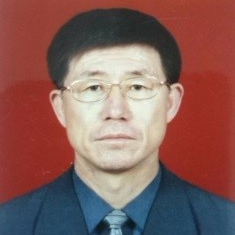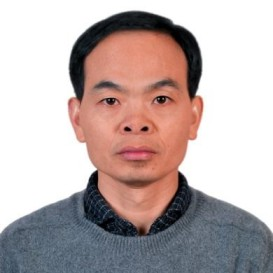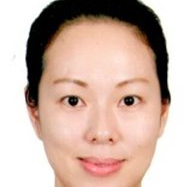Sustainable Strain-Hardening Cementitious Composites (Sus-SHCC)
A special issue of Sustainability (ISSN 2071-1050). This special issue belongs to the section "Sustainable Materials".
Deadline for manuscript submissions: closed (1 July 2022) | Viewed by 6181
Special Issue Editors
Interests: polymer/steel-fiber-reinforced high-performance concrete; 3D printing; strain-hardening cementitious composites; sustainable concrete; reinforced concrete
Special Issues, Collections and Topics in MDPI journals
Interests: strain-hardening cementitious composites; durability
Interests: ultra-high performance concrete; durability; sustainable concrete; self-compacting concrete
Interests: durability of the reinforced concrete; resilience of transportation infrastructures; cracking mechanism of concrete; recycled aggregate concrete
Special Issues, Collections and Topics in MDPI journals
Interests: strain-hardening cementitious composites; sustainable concrete
Interests: corrosion of steel in fiber-reinforced cementitious composites; durability of geopolymer concrete
Special Issues, Collections and Topics in MDPI journals
Special Issue Information
Dear Colleagues,
Strain-hardening cementitious composites (SHCC) reinforced by randomly distributed short fibers has attracted worldwide attention. Extensive research on SHCC has been conducted in the last three decades. SHCC is characterized with strain-hardening and multiple-cracking behaviors under uniaxial tension through tailoring the properties of fiber, matrix, and fiber/matrix interface. SHCC overcomes the inherent brittleness of ordinary concrete & mortar. SHCC has been successfully applied in structures and holds the potential to build self-reinforced structures either by cast or 3D-printing technology due to the combination of high tensile strength and high ductility.
Despite the increasing amount of research thus far on SHCC, the sustainability of SHCC needs improving and further innovative exploration. The amount of cement in SHCC is significantly higher than that of conventional concrete due to absence of coarse aggregate and lower sand/binder ratio, resulting in a low sustainability. Further, a high amount of cement dosage not only increases the total cost of SHCC but also induces higher hydration heat and lager shrinkage, which may impose negative effect on the mechanical properties of SHCC.
The goal of this Special Issue is to provide a platform to report the up-to-date development of sustainable SHCC (Sus-SHCC), which includes the design theory, the effects of different supplemental cementitious materials (SCMs), the rheological properties of matrix and its influence on fiber dispersion, the fiber and matrix interaction, the mechanical properties and constitutive models, the size effect, the shrinkage property, the alternative green binder materials such as geopolymer, the durability and long-term tensile properties, the self-X performances (self-healing, self-sensing, self-cleaning, etc.), and the simulation of cracking propagation.
Researchers in the field of SHCC are encouraged to submit their work in the form of original research, review, mini-review, or perspective in this Research Topic on themes including, but not limited to:
- Design of sustainable SHCC (Sus-SHCC) with different SCMs;
- Design of Sus-SHCC with low energy-embodied fibers like polypropylene fiber;
- Design of Sus-SHCC using alternative binders, such as LC3 and geopolymer cement;
- Rheological properties of SHCC matrix and its influence on fiber dispersion;
- Static and dynamic mechanical properties of Sus-SHCC;
- Shrinkage property of Sus-SHCC;
- Durability and long-term tensile properties of Sus-SHCC;
- Self-X performances (self-healing, self-sensing, self-cleaning, etc.);
- Bond behaviors between steel/FRP bar and Sus-SHCC;
- Structural applications in the repair and retrofitting areas and newly-constructed infrastructural fields;
- 3D printing application of self-reinforced Sus-SHCC.
Dr. Kequan Yu
Prof. Dr. Shuguang Liu
Prof. Dr. Guangcheng Long
Dr. Wenjun Zhu
Dr. Lili Kan
Dr. Yao Ding
Dr. Yan Xiong
Guest Editors
Manuscript Submission Information
Manuscripts should be submitted online at www.mdpi.com by registering and logging in to this website. Once you are registered, click here to go to the submission form. Manuscripts can be submitted until the deadline. All submissions that pass pre-check are peer-reviewed. Accepted papers will be published continuously in the journal (as soon as accepted) and will be listed together on the special issue website. Research articles, review articles as well as short communications are invited. For planned papers, a title and short abstract (about 250 words) can be sent to the Editorial Office for assessment.
Submitted manuscripts should not have been published previously, nor be under consideration for publication elsewhere (except conference proceedings papers). All manuscripts are thoroughly refereed through a single-blind peer-review process. A guide for authors and other relevant information for submission of manuscripts is available on the Instructions for Authors page. Sustainability is an international peer-reviewed open access semimonthly journal published by MDPI.
Please visit the Instructions for Authors page before submitting a manuscript. The Article Processing Charge (APC) for publication in this open access journal is 2400 CHF (Swiss Francs). Submitted papers should be well formatted and use good English. Authors may use MDPI's English editing service prior to publication or during author revisions.
Keywords
- sustainable SHCC
- alternative binder
- rheological property
- mechanical property
- shrinkage property
- durability
- self-X performance
- bond behavior
- structural application
- 3D printing
Benefits of Publishing in a Special Issue
- Ease of navigation: Grouping papers by topic helps scholars navigate broad scope journals more efficiently.
- Greater discoverability: Special Issues support the reach and impact of scientific research. Articles in Special Issues are more discoverable and cited more frequently.
- Expansion of research network: Special Issues facilitate connections among authors, fostering scientific collaborations.
- External promotion: Articles in Special Issues are often promoted through the journal's social media, increasing their visibility.
- Reprint: MDPI Books provides the opportunity to republish successful Special Issues in book format, both online and in print.
Further information on MDPI's Special Issue policies can be found here.











